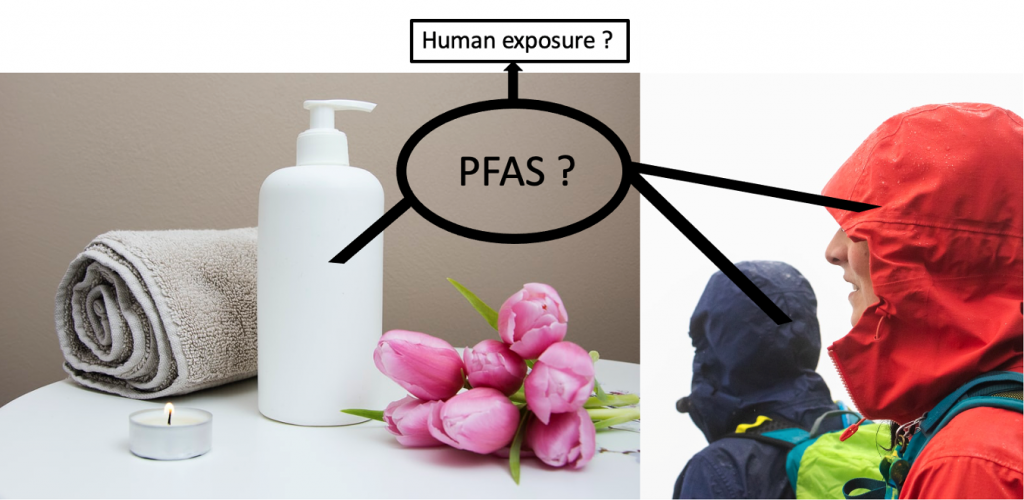
Per- and polyfluoroalkyl substances (PFASs), known as “forever” chemicals are found in many products that come in contact with our skin. Can these hazardous chemicals enter our bodies through the skin?
Oddný Ragnarsdóttir
The skin is the body’s largest organ, and its main purpose is to protect the rest of the body from the environment. Still, chemicals are able to breach this barrier and enter the blood stream from skin contact.
Scientists suspect that one family of compounds that might be able to cross the skin barrier is per- and polyfluoroalkyl substances (PFASs), which have been used since the 1950s in many different industries, from mining to the pharmaceutical industry. As time passed, studies found PFASs in the bodies of both humans and other animals around the world. Once in the body, these “forever” chemicals are hard to break down and can stay in the body for many years. Researchers have since connected many adverse health effects to levels of PFASs in the blood of humans, for example higher cholesterol and lower antibody response to vaccines meaning less protection from these vaccines.
A study from 2018 found many PFASs in cosmetic products, e.g. foundations, powders and sunscreens from brands like The Body Shop, Lumene and more. A recent study found even more products to contain PFASs, e.g. hand sanitizers and sunscreens. These are things some of us use daily on our skin. Others have identified PFASs in outdoor clothing and even in house dust, identifying more possible routes for skin contact with PFASs.
So now that we know that PFAS are used in many products that contact with our skin, we have to figure out what is happening. We still don’t know the extent to which these chemicals are able to breach the skin and get into our blood. My research project aims to help us figure this out.
In my project, I will be using human skin cells that have been grown in a lab, known as 3D-Human Skin Equivalent Models. These models show similar characteristics to human skin and have been successfully used in the pharmaceutical and cosmetics industry to test products. This way we will not have to use lab animals or human volunteers for our testing.
I will do three types of experiments:
- Using PFAS standards, which are pure chemicals, and putting them on the skin cells to test how much of the total concentration added will be able to get through the skin.
- I will prepare synthetic sweat and skin oil mixtures to see if PFASs can be dissolved into these liquids from e.g. a fabric sample that I know contains PFASs. If they can, I can figure out how much.
- I will then combine my first two steps and place a sweat/sebum mixture on the skin cells and then place a fabric sample on there to see the amount of PFASs that can enter the body through the skin from a PFAS containing fabric.
We already know to what capacity they can enter the body through our digestion and inhalation. Once we find this missing piece of the PFAS exposure “jigsaw” – of whether and how much uptake via our skin drives our total exposure to PFASs – we can decide what steps to take to protect ourselves from these “forever” chemicals.


